Dukes in discovery
Students test their scientific knowledge, curiosity in the lab
News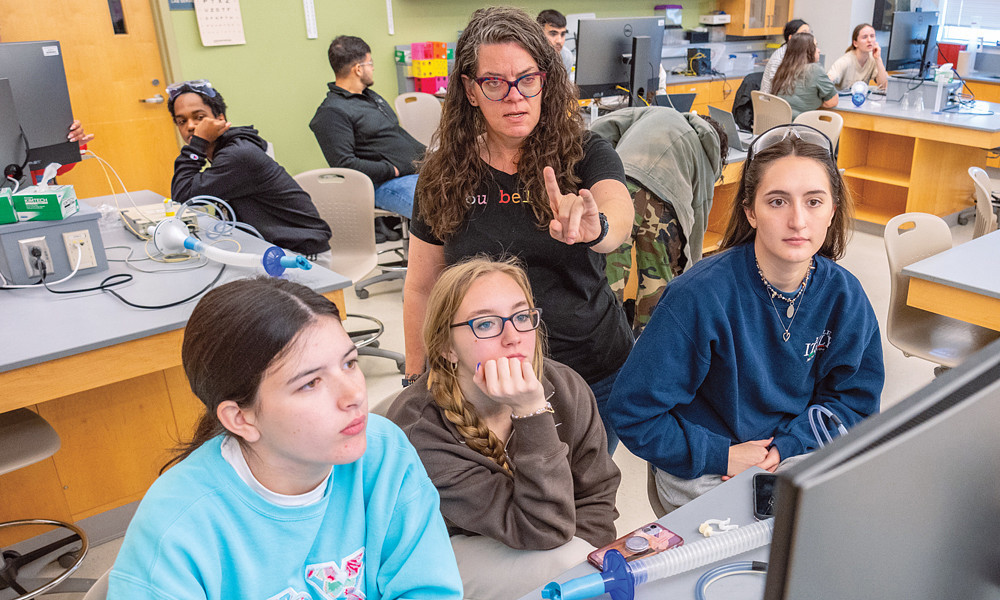
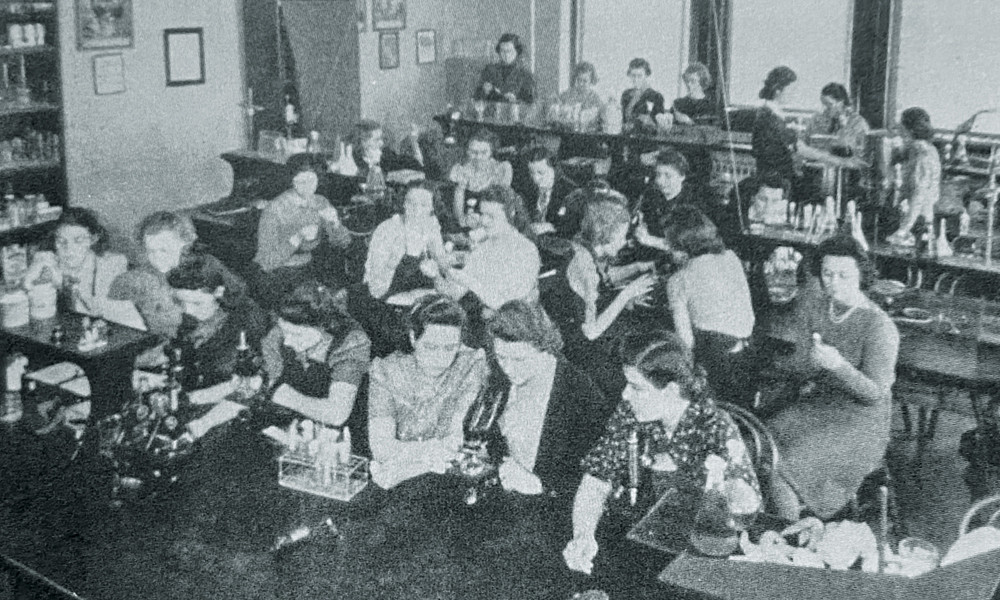
The Curie Science Club at Madison College in 1939: Although teacher training remained the principal function of the college in the late 1930s and 1940s, students were required to take general courses in biology, chemistry, physics and geology.
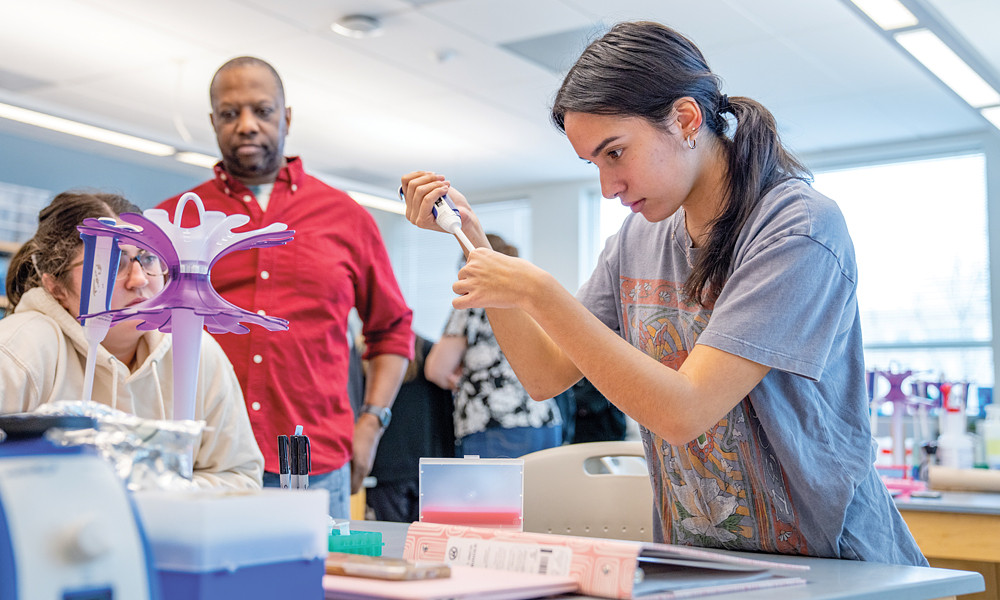
Students in JMU’s Center for Genome and Metagenome Studies use Nanopore’s MinION sequencer for DNA and RNA sequencing.
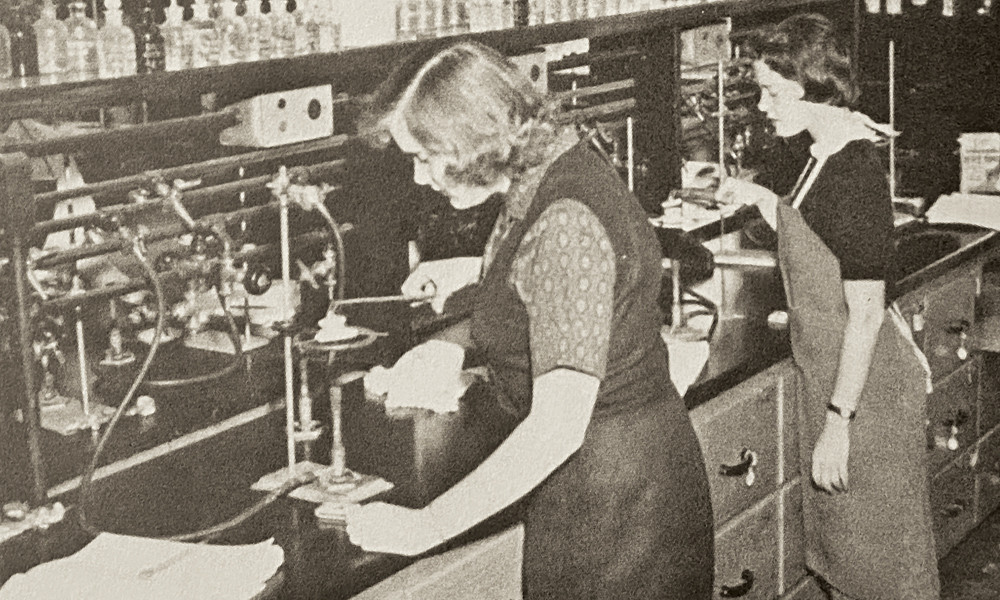
A medical technology class at Madison College in 1960
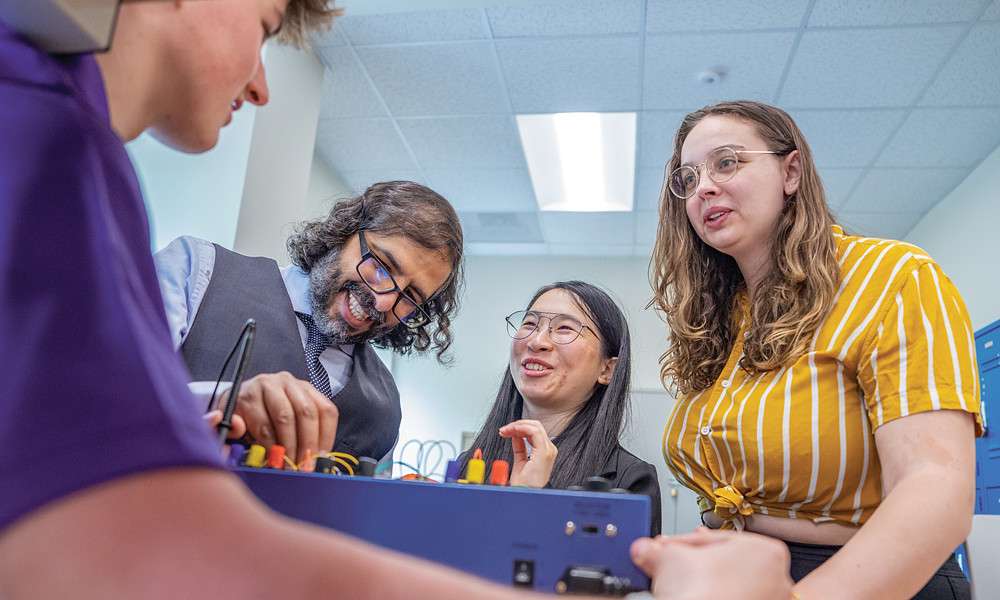
Students in the new Information Technology major participate in a circuitry demonstration with associate professor Ahmad Salman of the College of Integrated Science and Engineering.
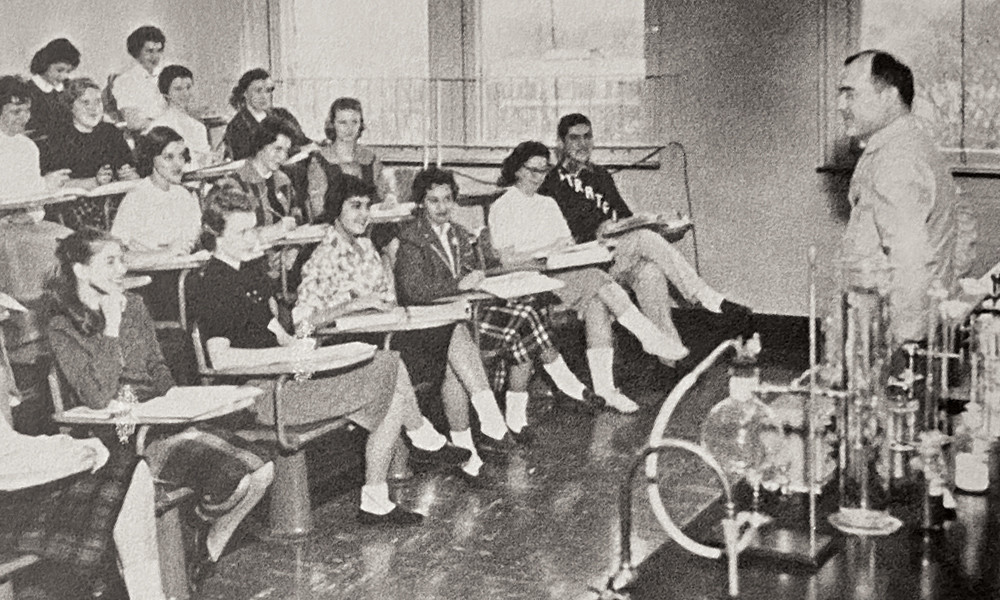
Students in a general-education science classroom in 1960: At the start of the decade, Madison offered 10 curricula of study, including one leading to a Bachelor of Science degree in liberal arts.
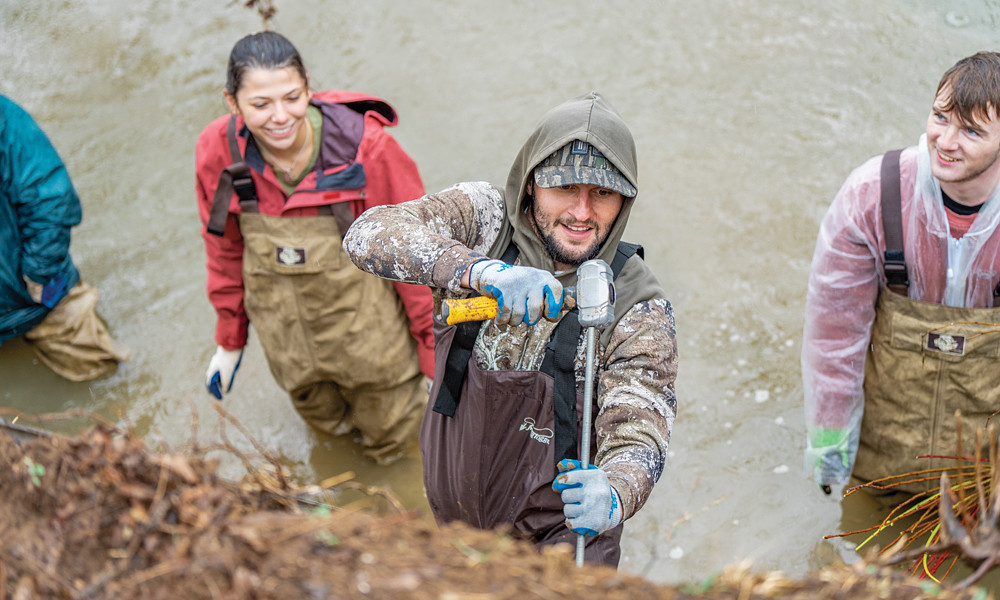
Professor Carole Nash’s ISAT students plant trees at the JMU Farm along a stream bank as part of their capstone project.
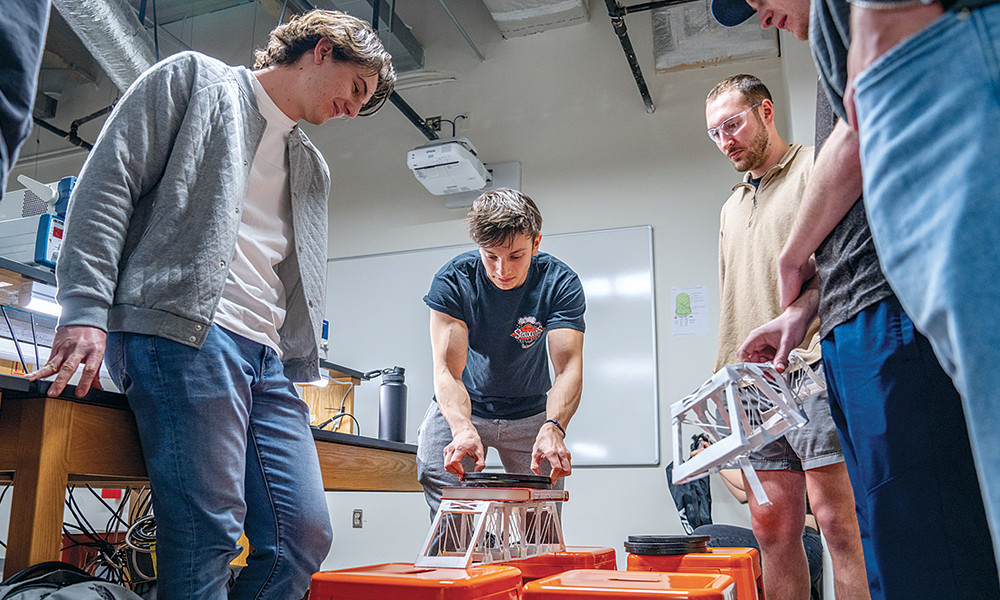
Sophomore Engineering students, under the direction of professor Steven Woodruff, load-test cardboard bridges that they built and analyzed.
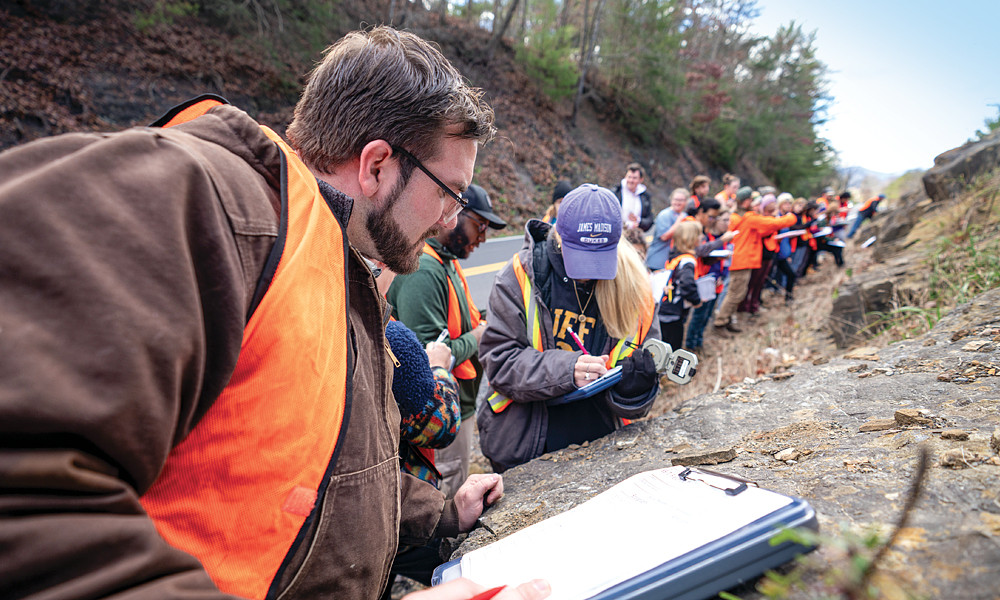
Geology students survey rock formations in Franklin, West Virginia, as part of their fieldwork. The class examines the stratigraphic, structural, and tectonic principles that control the character and distribution of rocks.
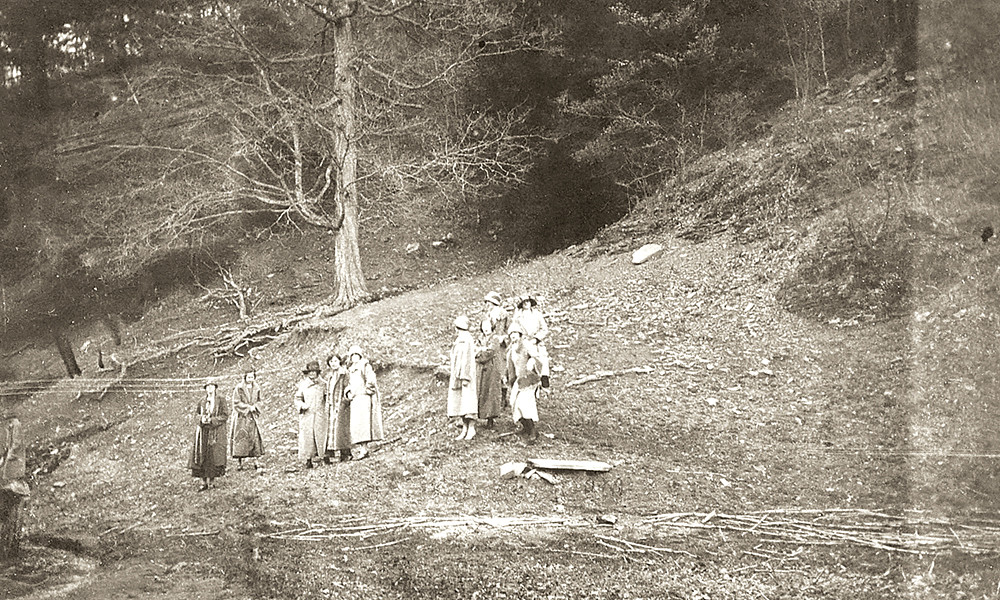 Harrisonburg Teachers College students having “just crossed the Cowpasture River, returning from Monterey and McDowell, May 1924.”
Harrisonburg Teachers College students having “just crossed the Cowpasture River, returning from Monterey and McDowell, May 1924.”
“[Our work] can no longer be confined to theory and books but must seek its material in real things, in nature, in the practical activities of industry and commerce, in the business, civic and social interests of life ...” — Julian Burruss, president, Normal and Industrial School for Women at Harrisonburg

